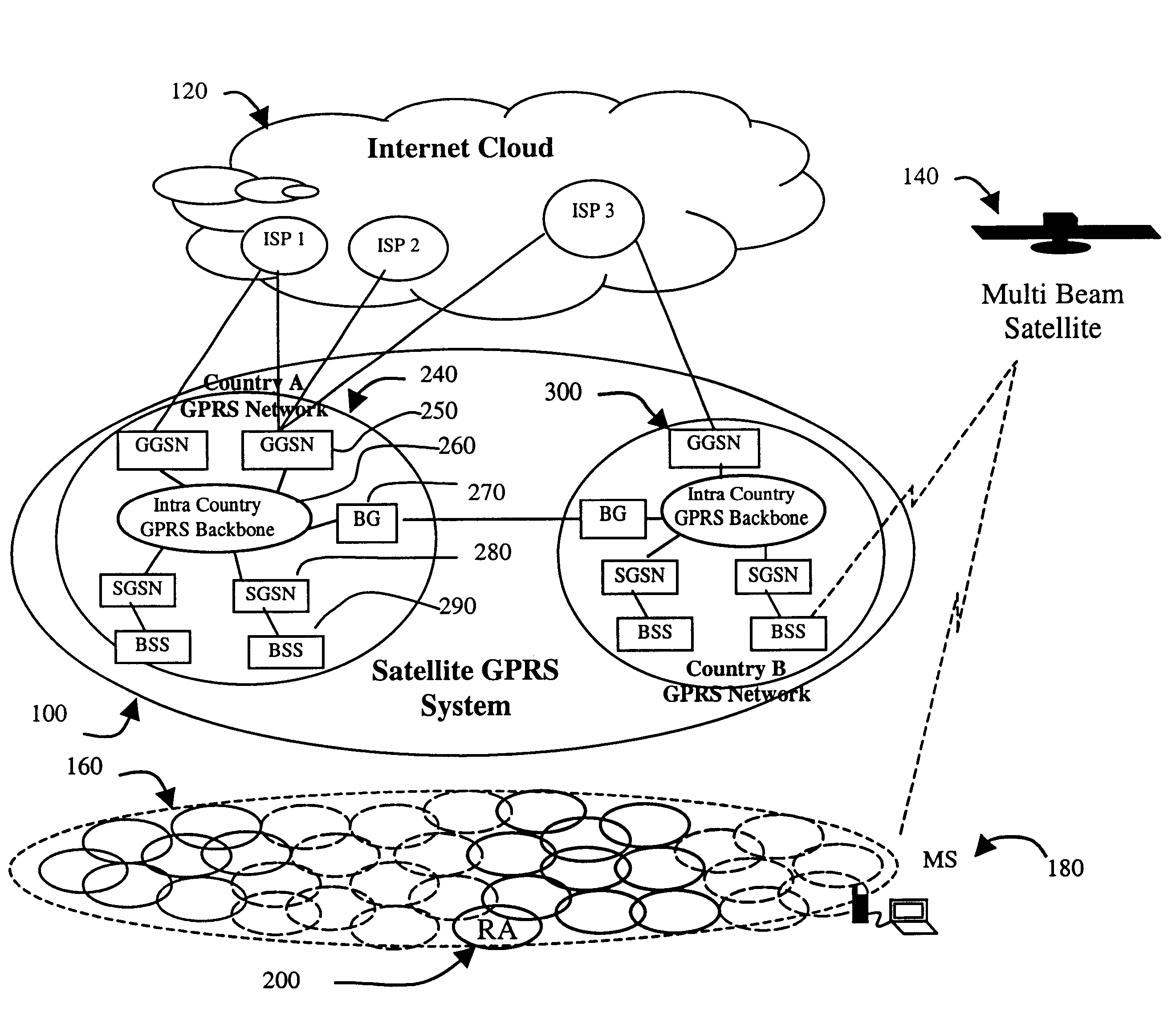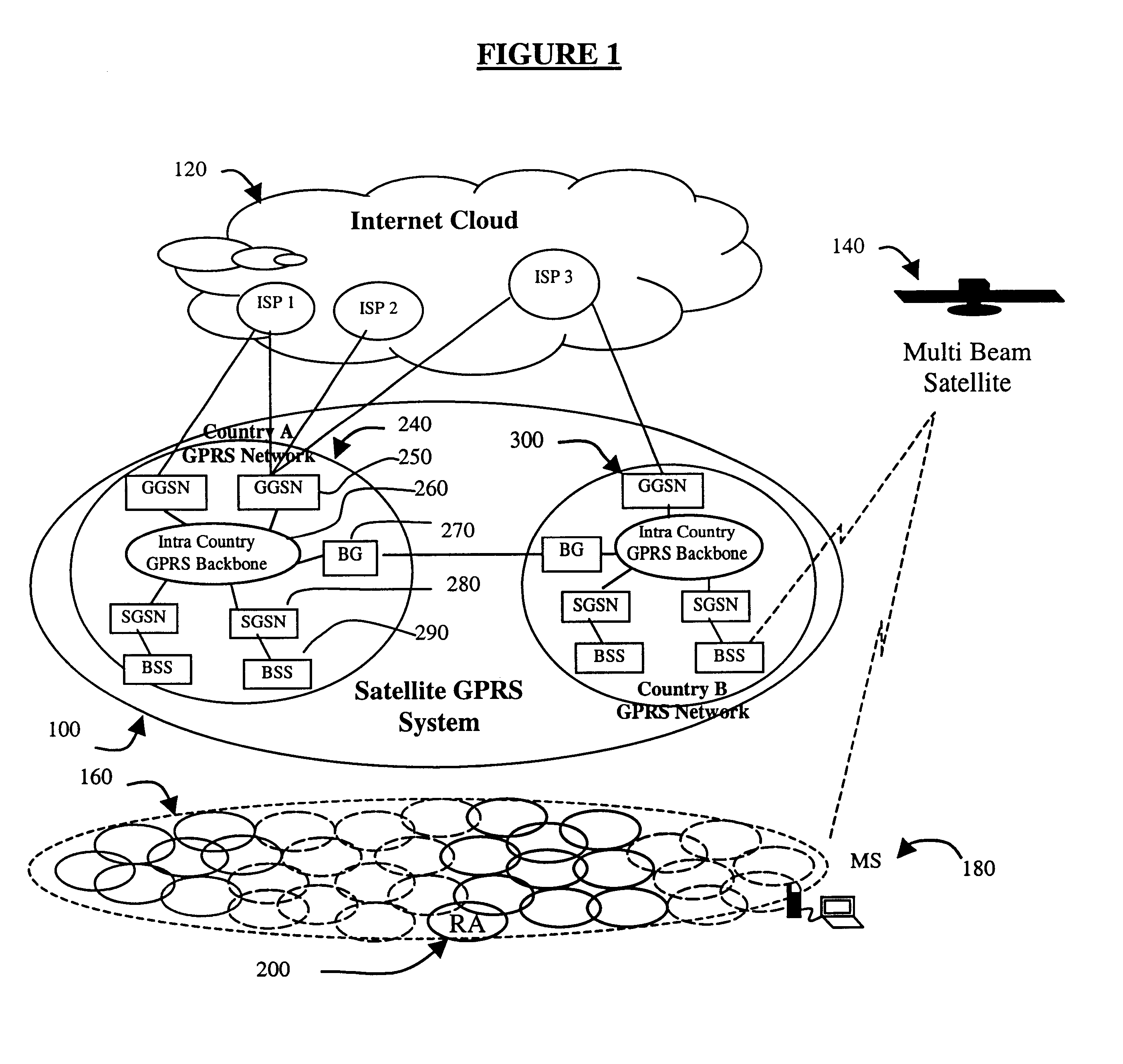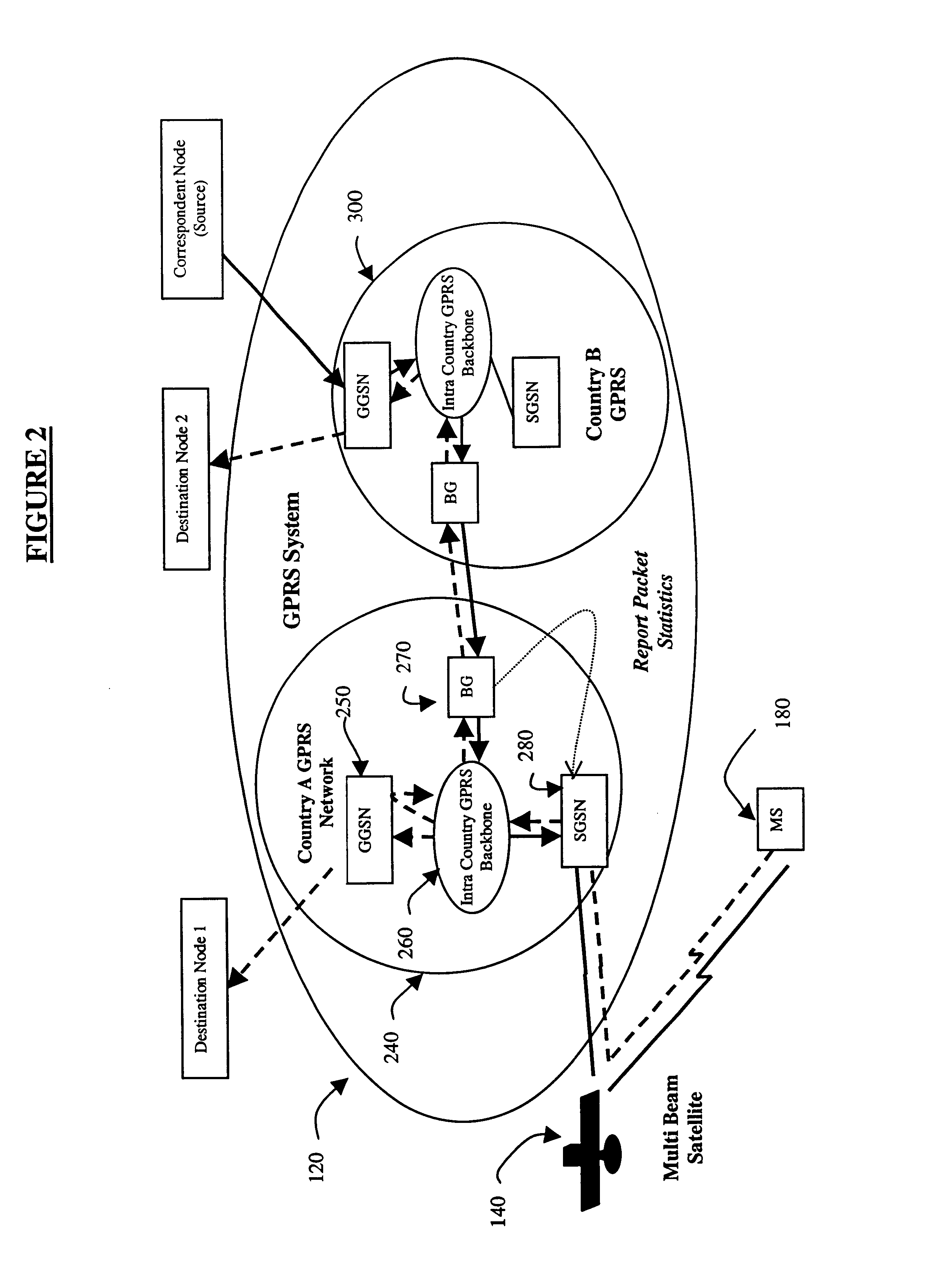Least cost routing for mobile satellite systems employing a GPRS network infrastructure
a network infrastructure and mobile satellite technology, applied in the field of mobile satellite systems, can solve the problems of cost minimization problem for both downlinks (mobile terminated), no system exists for efficient transfer of packet data, and gprs systems do not specifically allow for the determination of a “least cost”
- Summary
- Abstract
- Description
- Claims
- Application Information
AI Technical Summary
Benefits of technology
Problems solved by technology
Method used
Image
Examples
Embodiment Construction
Generally, the present invention is an improvement upon the existing GSM and GPRS networks as defined by the ETSI GSM standards described in the Background. In particular, one aspect of the present invention is an improvement upon the “Inter SGSN Routing Area Update” procedure defined in Section 6.9.1.2.2 of ETSI GSM 03.60. The present invention contemplates extending the existing terrestrial GPRS system infrastructure to include satellite mobile systems. This strategy allows for the use of existing mobility and session management capabilities of terrestrial GPRS networks, with minimal additional requirements. This extended logical architecture will support dual-mode operational mobile stations that will make seamless interworking between terrestrial and satellite GPRS networks possible.
In order to fully understand the present invention, an overview of GSM and GPRS networks is in order. A GPRS network is logically implemented on a GSM network subsystem infrastructure through the add...
PUM
 Login to View More
Login to View More Abstract
Description
Claims
Application Information
 Login to View More
Login to View More - R&D
- Intellectual Property
- Life Sciences
- Materials
- Tech Scout
- Unparalleled Data Quality
- Higher Quality Content
- 60% Fewer Hallucinations
Browse by: Latest US Patents, China's latest patents, Technical Efficacy Thesaurus, Application Domain, Technology Topic, Popular Technical Reports.
© 2025 PatSnap. All rights reserved.Legal|Privacy policy|Modern Slavery Act Transparency Statement|Sitemap|About US| Contact US: help@patsnap.com



